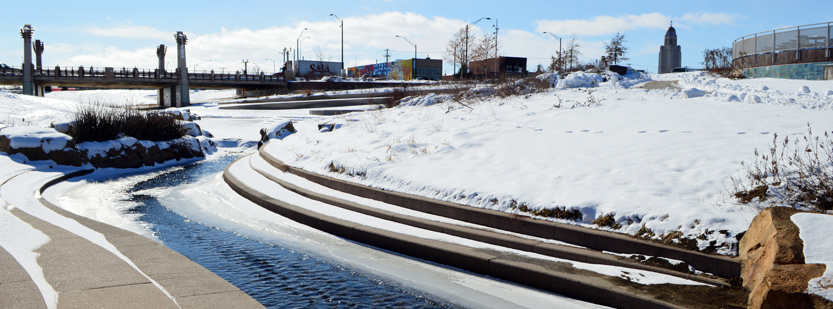Suite of tools, including ‘sister city’ match, brings context to climate change
April 11, 2019

Planning for climate change isn’t easy. The complexity of the issue itself is hard to digest, let alone translate into action items. But a new suite of tools designed by a group of University of Nebraska-Lincoln researchers gives municipal planners a clearer climate picture of what to expect and prepare for.
“Climate is not always tangible,” said Natalie Umphlett, co-lead on the project, dubbed Climate for Cities, and regional climatologist with the High Plains Regional Climate Center at the School of Natural Resources. “But our website offers tangible tools you can use and interact with to help make better decisions when planning for the future.
The project, funded by the National Oceanic and Atmospheric Administration Climate Program Office Sectoral Applications Research Program, provides climate data in a variety of forms, including historical trends and future projections, for a range of climate variables. The potentially greatest display of that information comes in the form of the “sister city” tool.
The tool covers the 10 states in the Missouri River Basin, and pairs up 100s of cities of varying sizes, providing a literal look at what one’s possible climate in the future looks like today. By 2055, for example, Lincoln’s annual temperature could be like Wichita, Kansas, and by 2099, like Joplin, Missouri, under a scenario where efforts have curbed greenhouse gas emissions enough to reduce the current trajectory.
The web tool also opens the door to see how that sister city has handled current climate issues, such as drought, mosquitoes or excess heat.
“Many communities do not have the resources to develop climate reports and tools on their own,” Umphlett said, but this site can help change that. “This gives towns, both big and small, the chance to begin to explore their climate; no one is left behind.”
Users will also find a searchable database for planning documents from 18 municipalities, detailing current and potential issues and solutions.
“We’ve catalogued all these plans by various topics. So, when you search for, say green streets or sustainable infrastructure, the results will take you to the exact page of the plan that covers the topic you are interested in,” Umphlett said. “It’s beneficial to see how others have implemented policies around these topics.”
The website is the result of two years’ worth of work with 11 cities in Nebraska, Iowa, Kansas and Missouri, and with university partners Martha Shulski, co-lead on the project from the Nebraska State Climate Office; Zhenghong Tang, of Community and Regional Planning; Tarik Abdel-Monem, of the University of Nebraska Public Policy Center; and the Bureau of Sociological Research, as well as Frank Uhlarik of the City of Lincoln.
The project was designed to help municipalities prepare for changes in climate, including warmer temperatures, increased rain events, and more erratic weather, all of which affect city services, utilities, industries, public health and city budgets.
Each of those 11 cities received personalized climate reports, which describe their expected change in temperature and precipitation, as well as the implications of those changes. Lincoln’s indicates the city will see more single- and multi-day heavy rain events, which could lead to more frequent flood events, soil erosion and decreased water quality, but the city also is likely to see more drought.
The researchers are cognizant that the reports represent a snapshot in time, and while the online suite won’t replace the report, it can certainly enhance its use as the climate data available will always be up-to-date, pulling the most recent numbers from the Applied Climate Information System, a management system for the complex stream of climate data maintained by NOAA Regional Climate Centers.
Early feedback has shown users expect to use the website to develop mitigation or adaptation plans and to validate decisions being made, as Lincoln plans to do.
"The climate report for Lincoln reaffirms earlier work by UNL published in ‘Understanding and Assessing Climate Change (2014)’ and forms a solid foundation for the city to ramp up mitigation and resiliency efforts,” Uhlarik said. “While we have included various mitigation goals in our 2017 ‘Lincoln Environmental Action Plan,’ we fully intend to more broadly address resiliency efforts both in our comprehensive plan updates and Utilities master plans in 2019/2020.”
That won’t be the end, though, for the researchers at Nebraska. Over the next few years, they intend to continue garnering feedback to improve and refine the tools, potentially expanding the site to cover specific industries or additional states.
“This work represents stakeholder-driven research that provides cities with a suite of usable climate information to help reduce risk to local climate change impacts,” Shulski said.
“We learned a great deal about municipal decision-making and climate communication, and the users are provided with synthesized and actionable planning tools.”
All steps forward in handling the complex issue.
— Shawna Richter-Ryerson, Natural Resources
More details at: https://hprcc.unl.edu/climate4cities/index.php